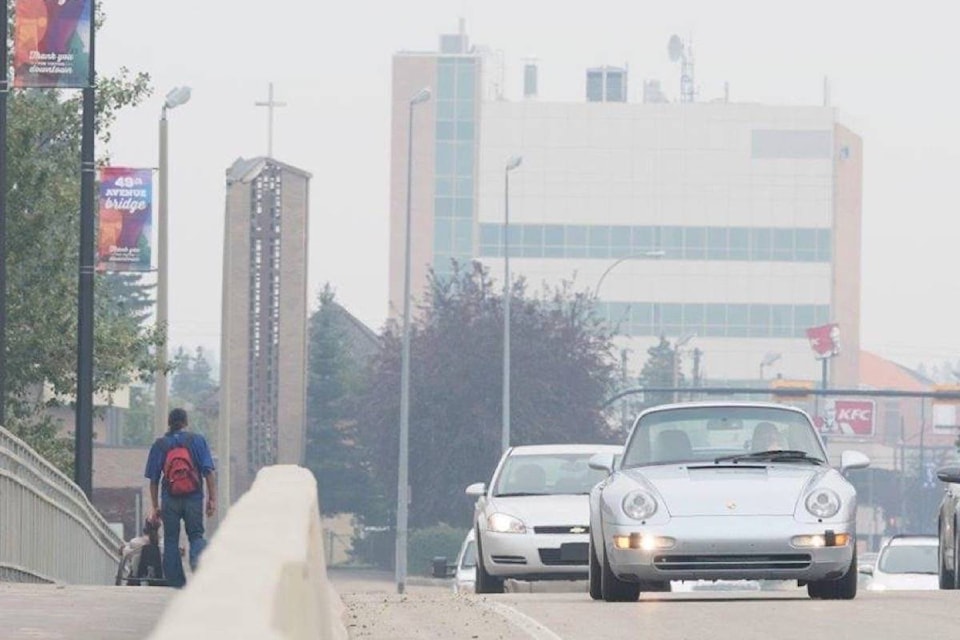A new report on pollution in Central Alberta shows a variety of man-made sources contributed to high levels of fine particulate matter during cold winter days in 2010 when pollution topped the charts in Red Deer.
Red Deer air quality has exceeded national standards for fine particulate matter for three consecutive reporting periods — 2009-11, 2010-12, 2011-13.
Parkland Airshed Management Zone (PAMZ) just released the report — Source Apportionment of Secondary Fine Particulate Matter in Central Alberta Using CMAQ — that showed pollution was the result of human activities like manufacturing, home heating, oil and gas, and motor vehicle emissions.
PAMZ executive director Kevin Warren said there was no one pollution source.
“What the report is suggesting to us is you can’t really target one sector. It’s a combination of industries and people who live and work in Red Deer. We are all contributing to the emissions that are leading to the formation of secondary particulate and primary particulate,” Warren said.
Two air monitoring stations are located in Red Deer, one on Riverside Drive close to the city’s civic yards since 2000, and the other at the Lancaster reservoir since 2013.
“Forest fires are obviously the biggest source of PM2.5 (fine particulate matter) that we’ve seen in our zone in the last few years. There’s very little we can do about that. For the most part our air quality, including fine particulate levels is really, really good. When we have the issues are those cold, cold days with inversions where there’s no dispersion of the pollutants and they build over a couple of days to these high levels.”
Warren said the report’s results are pretty consistent with the long-term plan developed by the province in 2015 to address pollution. At this stage in the plan the focus is on gathering information and getting a better understanding of pollution sources.
“That’s part of the reason why this modeling study was done and why the enhanced monitoring was done, to get a better understanding of what the sources are so you’re not running around willy-nilly throwing large dollars at sources and then seeing little effect. You want to make sure you’re targeting the right thing.”
PAMZ said reducing emissions to improve air quality will require the collaboration of industry, government and the public.
The report is available at www.pamz.org.
szielinski@reddeeradvocate.com
Like us on Facebook and follow us on Twitter
